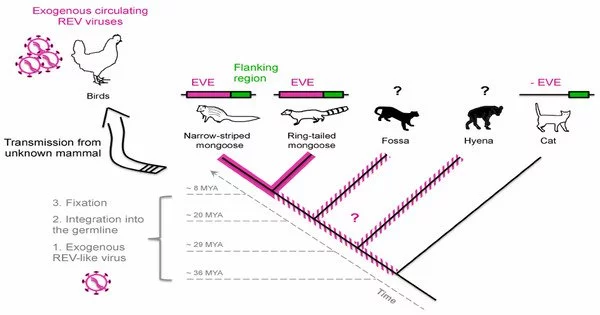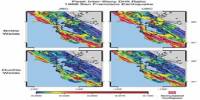Paleovirology is a branch of science that studies ancient viruses and their interactions with hosts across evolutionary time scales. It is the study of extinct viruses from the past. Unlike traditional virology, which focuses on the study of current viruses and their impact on current populations, paleovirology examines the historical aspects of viral evolution.
Because viruses cannot leave physical fossils, indirect evidence is used to reconstruct the past. This field uses molecular biology, genomics, and bioinformatics to look for remnants of ancient viral infections that have left traces in the genomes of various organisms. For example, viruses can cause evolution of their hosts, and the signatures of that evolution can be found and interpreted in the present day.
Furthermore, some viral genetic fragments that were integrated into the germline cells of an ancient organism have been passed down to us as viral fossils, also known as endogenous viral elements (EVEs). Endogenous retroviruses, or ERVs, are EVEs that arise from retrovirus integration, and the majority of viral fossils are ERVs. Although no virus has been found in mineral fossils, they may have preserved genetic code from millions of years ago, hence the “fossil” terminology. Non-retroviral DNA and RNA viruses are responsible for the most surprising viral fossils.
Key aspects of paleovirology include:
- Endogenous Retroviruses (ERVs): ERVs are a type of ancient viral element that has become a permanent part of the host genome. These retroviruses integrate their genetic material into the host DNA during infection, and over time, these integrated sequences can be passed on to future generations. Studying ERVs can provide insights into the historical interactions between viruses and their hosts.
- Viral Fossils: Scientists can identify remnants of ancient viruses in the genomes of organisms, sometimes referred to as “viral fossils.” These remnants may include non-functional or degraded viral sequences that have accumulated mutations over time. Analyzing these remnants helps researchers reconstruct the evolutionary history of viruses and their hosts.
- Co-evolutionary Dynamics: Paleovirology explores the co-evolutionary dynamics between viruses and their hosts. By studying ancient viral sequences, researchers can gain insights into the arms race between viruses and host immune systems over millions of years.
- Evolutionary Origins: It helps us understand the origins of viruses and how they have evolved alongside their hosts. It aids researchers in tracing the evolutionary pathways of viruses and the genetic changes that have occurred over geological time scales.
- Disease Evolution: Understanding the historical interactions between viruses and hosts can provide insights into disease evolution. Scientists can identify patterns of adaptation and evolution that may have influenced the emergence of diseases in modern populations by studying ancient viral sequences.
Overall, paleovirology contributes to the larger field of evolutionary biology by providing valuable information about the long-term dynamics of virus-host interactions. This study contributes to unraveling the mysteries of ancient viral infections and their impact on the evolution of life on Earth.
















